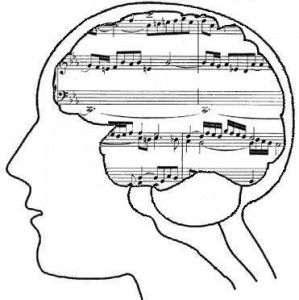Here’s my definition of good practicing:
“Good practicing sounds good and feels good.”
This goes directly against most people’s definition of practicing that goes something like this:
“Practicing is playing something over and over until you get it right.”
That second definition is a major cause of frustration and heartbreak among musicians young and old, amateur and professional.
That second definition actually describes really bad practicing. And by “bad” I mean destructive. Playing music over and over until you “get it right” not only does not work, it actually bakes in mistakes and bad habits.
Here’s how that works:
We try to play a piece or a passage that we want to be able to play. It doesn’t go well. Maybe we are playing some wrong notes or wrong rhythms, maybe it’s out of tune, and we are probably ignoring details like articulation and dynamics. And for sure, it’s not what anyone would call “musical”.
So what’s the logical next step? For most of us the logical next step is play it again. And again, and again, and again.
Is it better? Well, some aspects might be a bit better, but we know there are still lots of things wrong, and we have no intention of adding dynamics and articulation until we at least have gotten the notes right. And some parts actually seem to be getting worse.
Sound familiar?
The problem with this is that every time we repeat something we are programming that thing into our minds and our bodies. Not only are those wrong notes getting imprinted to your memory, those dynamics and articulations that you are “saving for later” are actually becoming another bad habit that will be hard to break. After all, you can’t play without a dynamic – you are either playing the right dynamics or you are training yourself to play the wrong dynamics.
Behavioural science tells us that we need to repeat a new habit at least four times as much as what produced the old habit. So if you miss an accidental ten times it is going to take at least forty repetitions of the right note before it really settles into a good habit.
This is very inefficient and you are not sounding very good. Where is the fun in that?
Good practicing, on the other hand, is very efficient and it is a lot of fun. That is how you know you’re practicing well – it sounds good and it feels good.
Here is how a better approach works:
Start with the hard decision to play only as much of the piece as you can play extremely well and only as fast as you can play it extremely well. This can be hard on our egos, but it’s worth it.
That might mean you are only playing the first four bars, or the first bar, or the first two beats. And it might mean that you are playing those few notes at half the required tempo, or a fourth or an eighth of the required tempo.
This is where it breaks down for most people. This takes courage. Can you accept that you really can’t play this whole piece yet? Can you accept that you can only play a small section and only at a ridiculously slow tempo?
If you can bring yourself to slowing down that much, welcome to the world of good practicing. I can guarantee that your practicing is going to be much, much more productive and much, much more enjoyable.
So now you’ve mapped out a very short section that you think you can handle at a very slow tempo. You play it and, guess what? – it’s pretty good. But was it perfect? Did you catch that dynamic change? Did you notice exactly which notes the slur covered? You know you can do it – it’s only a few notes at a slow tempo. You play it again. You added those details you missed the first time and a light bulb comes on over your head – oh! there’s something so beautiful about this passage that you didn’t realize when you were playing it too fast and skipping over the markings. You start to really dig into what this music is all about.
Now you are really practicing.
There are many strategies for applying this simple principle to different musical situations. For example, some players like to start at the end of a new piece and work their way backwards a phrase or so at a time. This avoids a too common result of poor practicing: you sound great on the first few bars of a piece and it’s downhill from there. Start at the end to avoid that. Or highlight the most difficult sections and practice only those sections until they are just as you would like them to be.
There is a wealth of strategies to deal with all the different things that can trip us up – memorizing. difficult rhythms, awkward leaps, or anything else that can come up in your practice room – you will learn all these strategies in your lessons.
But the bottom line is: always get to good playing immediately – playing that sounds good and feels good – playing that includes all the details and zero mistakes – by working on small, bite-size chunks at very easy tempos.
Give it a try!

